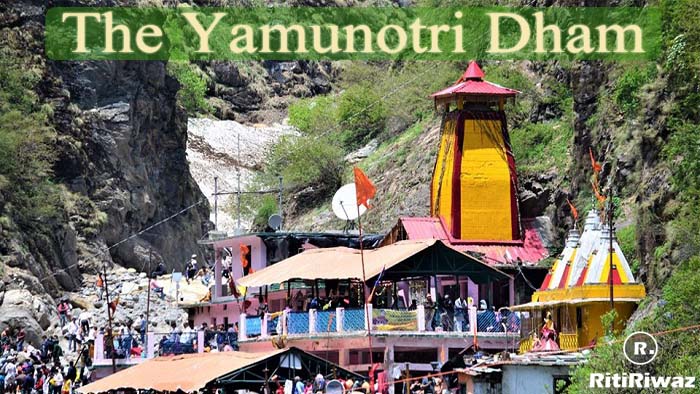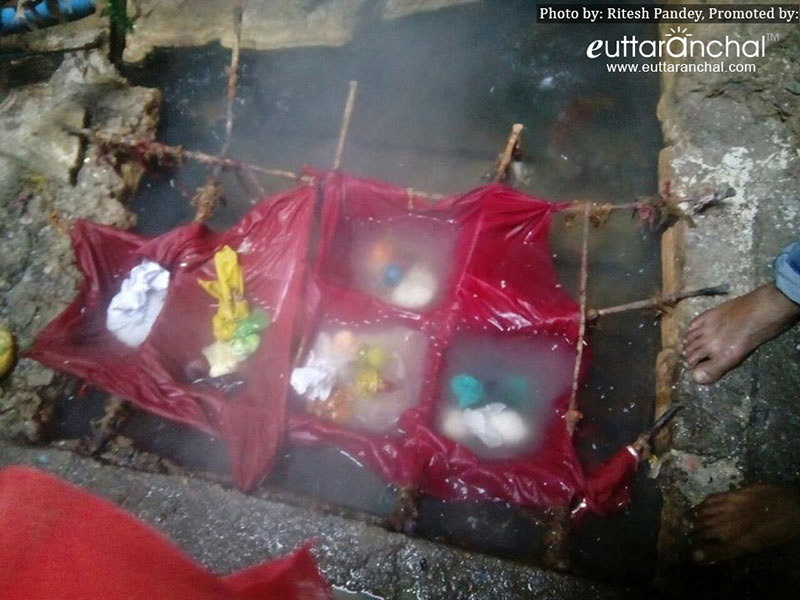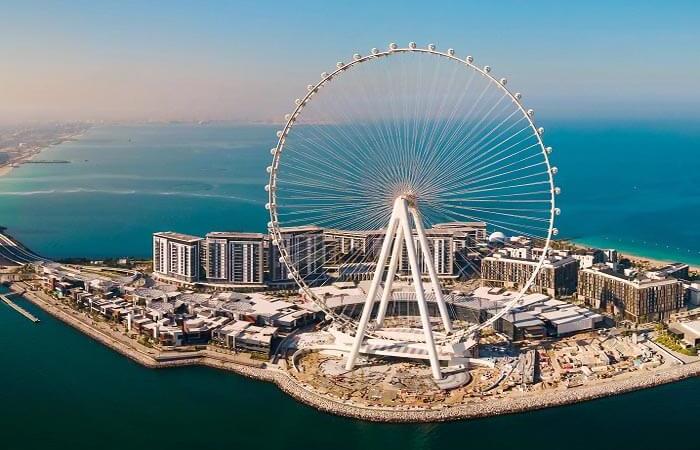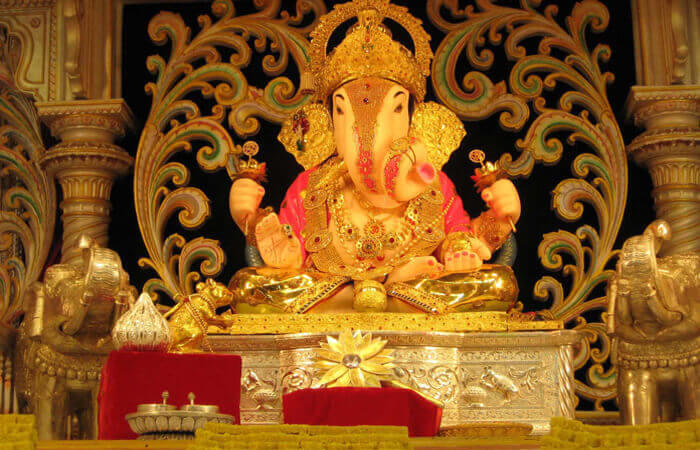Yamunotri Dham – The Origin Of River Yamuna

Yamunotri Dham is the source of river Yamuna which is the second most holy river of India and one of the four Char Dham Yatra. Yamunotri Temple is located in the western region of the Garhwal Himalayas at an altitude of 3,291 meters in the Uttarkashi district of Uttarakhand.
The Yamunotri temple is dedicated to the goddess Yamuna and has a black marble idol of the goddess. The source of the river Yamuna is dominated by Bandarpoonch Peak (3165 m). The holy Yamuna believed to be the daughter of Surya (Sun) and the twin sister of Yama (God of death) originates from Champasar Glacier (4421 m), a trek of 1 km above the Yamunotri Temple, which is not easily accessible.
The temple is part of the revered Chota Char Dham pilgrimage. Yamunotri temple is closed during winters for six months (October-November till April-May) and the doors are opened on the holy day of Akshaya Tritiya which is the third lunar day of the bright half of the Hindu month of Vaishakh after which the Char Dham Yatra commences in Uttarakhand. In winters the whole area is covered with heavy snow which begins to melts from April- May and it becomes easier to walk on the mountain path.
The actual temples are only 13 kilometers from the city of Hanuman Chhatti and 6 kilometers from Janaka Chatti. Walking on foot or horses or sedan is available here. The climb from Hanuman Chatti to Yamunotri is very beautiful with beautiful views of many waterfalls. There are two trekking routes from Hanuman Chatti to Yamunotri from where there is a five or six-hour climb to Yamunotri.
History of Yamunotri Temple
The temple of Yamunotri is dedicated to the goddess Yamuna, who is considered as the mother of mankind. The Yamuna is one of the major rivers of India; Yamuna river is a part of three sister rivers which include Ganga and Saraswati.
The temple of Yamunotri was built in 1839 by Tehri Naresh Sudarshan Shah but was severely damaged by snow and floods. In the late 19th century, it was built by Maharani Gularia of Jaipur.
As the story is told, Asit Muni, a sage, makes his home at this place as he bathes in the Ganges and Yamuna rivers every day. It is also believed that during his last days, when he could not travel from the Yamuna to the Ganges, the river Ganges, seeing his immense reverence, originated from his hut so that he could continue his rituals. This place is called Yamunotri.
The major attraction of Yamunotri
The main attraction is the temple in Yamunotri. Other attractive places to visit around Yamunotri are Surya Kund, Saptarishi Kund, and Hanuman Kund.
Hanuman Kund is about a kilometer away from here and has some of the most beautiful views in the region. It can also initiate a Dodital trek, which is a dream for most trackers. Yamunotri is definitely the best time to visit during the summer season.
Sayanachatti beyond Barkot is a serene spot on the banks of the river offering beautiful surroundings to the relief of trekkers to the shrine. Jankichatti is known for thermal springs with its wheat fields and a stone house is a refreshing stopover for the tourists. It is also famous for its Narayan Temple.
Hanuman Chatti at the confluence of Hanuman Ganga and Yamuna rivers is the popular base camp for the trek to Dodital. Chamba, a sylvan spot on the way to Tehri offers an excellent view of the Bandarpoonch Peak and the snow on the mountain ranges.
The temple opens on the Akshaya Tritiya in the month of April or May and closes in the winter, ie Yama Dwitiya on the second day after Diwali, November. The actual source of river Yamuna is at an elevation of about 4,421 meters.

There are hot springs nearby the most sacred being Surya Kund in which pilgrims cook potatoes and rice and this in a piece of cloth is first offered to the deity and then distributed as prasad. Near the Kund, the Divya Shila – a rock pillar is worshiped before entering the Yamunotri Temple.
The priests of Yamunotri come from the village of Kharsali, near Jankichatti, which is also the winter seat of the diety when the temple is closed.
How to get here – How to Reach Yamunotri
Road trip: Taxis and buses are available from each of these places. However, if you or your driver has a mountain driving license then you can also take your own vehicle. But it is not recommended until you experience driving. There are many types of transport that can be hired from the foothills.
The Distance between Haridwar to Yamunotri is 220 km and takes approx 5 hrs by road. The most ideal road route to Yamunotri is via Barkot and Dehradun. There are no motorable roads to directly connect Yamunotri but well-developed motorable roads connect Hanuman Chatti to other renowned Uttarakhand cities like Dehradun, Uttarkashi, Barkot, Rishikesh, Tehri Garhwal, and many more. Taxis and buses ply on these roads regularly, allowing you to reach Hanuman Chatti quite easily.
From Hanuman Chatti, the actual Yamunotri Yatra commences, you can go till Phool Chatti which is 5km away by jeep. Then from Phool Chatti, one has to trek 5 km to reach Janaki Chatti then more 8km trek to Yamunotri Dham.
Railway Travel: The nearest railway is at Rishikesh, 200 km from Yamunotri, Dehradun railway station is at a distance of 175 km from Yamunotri.
Air Travel: Jolly Grant Airport at Dehradun, the nearest airport to Yamunotri, is located 200 km away. One can avail Helicopter services to reach Yamunotri from Dehradun.
The shrine can be visited from Dehradun to Mussorie and then the state highway to Jankichatti. Jeeps can also be hired from Rishikesh to Jankichatti. Ponies and palkis (hand-drawn palanquins) can be hired at Jankichatti to reach Yamunotri. Porters are available at Jankichatti.
Visiting places like Yamunotri gives you the feeling of being in accordance with nature and receiving divine blessings of the holy place.






